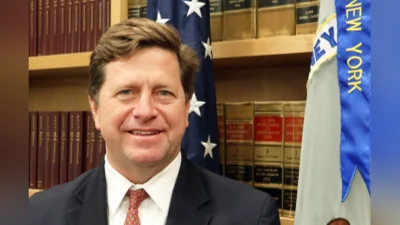The Congressional Record is a unique source of public documentation. It started in 1873, documenting nearly all the major and minor policies being discussed and debated.
“STATEMENTS ON INTRODUCED BILLS AND JOINT RESOLUTIONS” mentioning the U.S. Dept. of Justice was published in the Senate section on pages S10320-S10321 on Oct. 8, 2009.
The publication is reproduced in full below:
STATEMENTS ON INTRODUCED BILLS AND JOINT RESOLUTIONS
By Mr. FRANKEN (for himself, Mr. Whitehouse, and Mr. Brown):
S. 1763. A bill to amend the Internal Revenue Code of 1986 to deny the deduction for advertising and promotional expenses for prescription pharmaceuticals; to the Committee on Finance.
Mr. FRANKEN. Mr. President, I am pleased today to introduce the Protecting Americans from Drug Marketing Act. Health care spending is out of control, and this bill represents a small but significant step toward reigning in unnecessary health care costs.
Right now, the Federal Government gives pharmaceutical companies a tax break every time you see a drug advertisement on TV--and for every free mug your doctor receives that has a pharmaceutical company logo on it. These tax breaks add up to billions of dollars of lost revenue for the Federal Government.
Pharmaceutical companies are getting a huge boost at a time when thousands of Americans are going bankrupt because of health care bills, and millions more are struggling to pay for health insurance coverage. This legislation will remove these unfair tax benefits so pharmaceutical companies can focus their dollars on developing new drugs, not excessive marketing schemes.
Nationwide, prescription drug spending rose 500 percent between 2000 and 2005, from $40 billion to $200.7 billion per year. But while costs to patients are growing exponentially, the pharmaceutical industry is spending an astonishing $30 billion annually on marketing. Of course, these companies have the right to advertise. But taxpayers shouldn't be subsidizing these expenses.
Research has shown that glossy advertisements and logo-laden pens don't add any value to our health care system. Instead, drug companies are trying to use both consumers and doctors as pawns in order to maximize profits. The Federal Government should not subsidize these activities.
It is challenging enough to navigate our health care system; the recent explosion of prescription drug ads on television, on the Internet, and in magazines just confuses things further. Many ads encourage consumers to use expensive drugs over cheaper alternatives that may work just as well. Other ads provide a skewed view of what the drug does, minimizing the risks while overemphasizing the benefits. Health care already costs enough--taxpayers shouldn't be paying to subsidize these unhelpful and confusing messages.
Drug companies are capitalizing on this confusion. Studies have shown that every dollar spent on advertising to consumers yields an additional $4.20 in sales for drug manufacturers. This is a very high return on investment, and so not unsurprisingly companies have increased spending on ads to consumers by 536 percent from 1996 to 2007. That is 536 percent. In 2007 alone, pharmaceutical companies spent nearly $4.8 billion on these excessive marketing campaigns. This spending is passed on to consumers, resulting in higher prescription drug costs for Americans. This bill will simply take away tax breaks that encourage drug companies to do this.
The Protecting Americans from Drug Marketing Act is also needed to make sure doctors and other providers are making decisions based on the best scientific evidence. Today, doctors frequently receive information about prescription drugs from the drug companies themselves. The Protecting Americans from Drug Marketing Act also takes away the tax break that drug companies receive for sending representatives to hospitals and doctors' offices to encourage them to use their drugs. These representatives are the ones who leave behind the pens and coffee mugs--or even nicer gifts--that you see at the clinic, logoed with the names of specific drugs.
We have created a culture in which doctors receive far too much biased information about drugs--and how they can be used in unapproved ways--from pharmaceutical reps who aren't doctors, often have no scientific training, and most certainly have a vested interest in selling the newest, most expensive products. This bill won't end that practice, but it will end the lucrative tax breaks that encourage it. For this reason, it will help providers make medical decisions based on objective, peer-reviewed research--not on biased materials from companies standing to profit from doctors' prescription pads and patients' wallets.
The Federal Government could save up to $3.5 billion every year by eliminating these tax breaks used every day by drug companies. In this small way, we can help stem the tide of confusing and misleading drug ads that you and your family see every day on TV and in magazines. Just as importantly, we can bring down the cost of health care, make prescription drugs more affordable for all Americans, and help pay for the cost of health reform that is so sorely needed.
Americans are struggling just to keep their health insurance and pay their bills. Let us end this counterproductive subsidy and spend our taxpayer dollars more wisely. I thank Senators Whitehouse and Brown for joining me in introducing this important legislation, and I urge my colleagues to work with us to include it in health reform legislation.
______
By Mr. CARDIN (for himself, Ms. Collins, Mr. Brown, Ms. Mikulski,
Mr. Whitehouse, Mr. Schumer, and Mr. Burris):
S. 1765. A bill to amend the Hate Crime Statistics Act to include crimes against the homeless; to the Committee on the Judiciary.
Mr. CARDIN. Mr. President, I rise today to introduce the Hate Crimes Against the Homeless Statistics Act of 2009. I am joined in this effort by Senator Collins. I am also joined by the Presiding Officer, Senator Brown, Senator Mikulski, Senator Whitehouse, and Senator Schumer.
This week marks the 1-year anniversary of the tragic murder of John Robert McGraham. Mr. McGraham was a well-known member of the Wilshire neighborhood of Los Angeles, CA, for more than 20 years. On October 9, 2008, he was doused with gasoline and set ablaze as he slept. By the time neighbors and residents ran to his rescue, his clothes had been burned off and his face blackened. The attacker apparently had a dislike toward homeless individuals. Known for rarely asking for money and not bothering anyone in the community, Mr. McGraham lost his life because of his homeless status. Days after his murder, hundreds of people gathered at the spot of his death and created a memorial for him.
Mr. McGraham is just one of many homeless individuals who have suffered hate crimes because they were homeless. In a popular men's magazine, under the blurb titled ``Hunt for the Homeless,'' the following was displayed: ``Kill one for fun. We're 87 percent sure it's legal.'' We have heard the horrific stories: A woman sleeping was pushed into a river; a man was beaten, soaked in beer and urine and covered with trash; a woman was beaten in the face with a tire iron; and many more unfortunate stories. This behavior should not and cannot be tolerated in our society. What kind of society would we be if we allowed these types of attacks to continue without standing up against them?
The Hate Crimes Statistics Act of 1990 requires the Department of Justice to collect data from law enforcement agencies about ``crimes that manifest evidence of prejudice based upon race, religion, sexual orientation or ethnicity.'' In 1994, Congress expanded coverage to require reporting on crimes based on disability. Data collection provides the needed information to policymakers, law enforcement, and communities so they can make informed decisions as to how best to proceed with the problem presented to us. The Hate Crimes Against the Homeless Statistics Act will again expand coverage by adding ``homeless status'' to the list of categories required to be reported on by the Department of Justice.
In order to measure the level of bias-motivated crimes, data is needed. Currently, there is a significant problem in establishing a baseline for meaningful comparison. The best way to prove or disprove an issue's validity is data collection. According to the National Coalition for the Homeless, which has tracked these types of attacks since 1999, they have reported an increase in the number of hate crimes targeted at homeless individuals in the last decade. If we take the statistics provided by this coalition and compare them to the available statistics currently being collected by the FBI under the Hate Crimes Statistics Act, the results are startling.
The number of hate crimes resulting in death among listed members, those in the statute, is lower than the known number of fatal attacks on homeless individuals. Between 1999 and 2007, there were 94 hate crime fatalities among the listed individuals, compared to 218 fatalities in the same period directed at homeless individuals. I am introducing this bill today in an effort to get uniform data collection on these attacks so that we have a uniform basis on which to know how serious the problem is.
There are approximately 3.5 million people a year who are likely to experience homelessness. They are mothers, fathers, and children, and they are among the most vulnerable members of our society. Veterans account for 20 percent of our homeless population. Families displaced because of domestic violence make up another 28 percent of the homeless population. With increased funding to provide housing for the homeless, the previous administration had seen a 20-percent drop in family homelessness. However, because of the current economic crisis, an increase in the homeless population has been reported.
The 2008 annual homeless assessment report to Congress revealed that the number of homeless families, particularly those in suburban and rural areas, has increased. The number of families seeking shelter has increased by 9 percent overall and by nearly 56 percent in suburban and rural areas. Our current economic crisis has reversed the progress that we made between 2005 and 2007. There is also evidence that when State and local budgets are cut, homeless services are affected. With an increase in the vulnerable population, with the government unable to provide funding, at a minimum we have a duty to report senseless violence against this risk population.
That is what I am asking, pure and simple, that we find out exactly how many homeless people are being victimized in a uniform way by having reliable data and information so that we, the policymakers, can make the right policy decisions.
Homeless people are part of America. Every day we see veterans, men, women, and families who have been forced by circumstances to live on the streets. We have walked by them on our way to work or to school. In an effort to monitor bias-motivated violence, the first step is to realize the scope of the situation by gathering the data.
I urge my colleagues to support this modest legislation so that we are better prepared to deal with this challenge.
____________________








